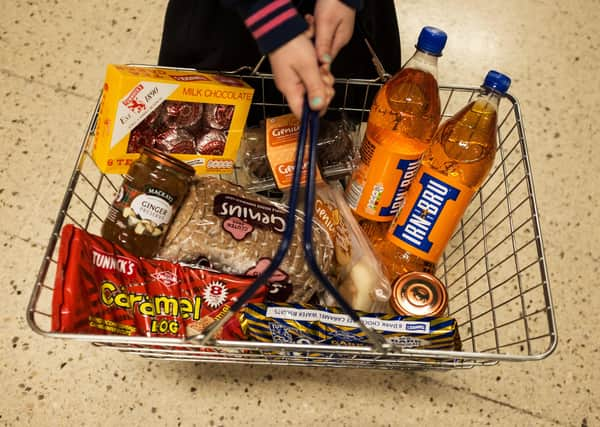Innovation is key to flourishing sector – Eric Galbraith


Food and drink are commonly grouped together by industry commentators and analysts. The commercial reality is they are individual sectors in their own right. Each can be broken down further, to separate the seafood processors from the bakers and the distillers from the soft drink manufacturers. Every operator has its unique supply chain challenges and those issues are tough at either end of the chain.
Before the onslaught of Covid-19, the industry was promoting collaboration. In some markets, with diverse trade body representation, amalgamation was being mooted to create stronger capabilities. The Scottish Government and other agencies recognised the importance of the sector’s significant contribution to the economy in terms of growth and job creation.
Advertisement
Hide AdAdvertisement
Hide AdIn Scotland, the sector was attracting inward investment from operators and investors seeking fresh opportunities. Quality produce was the nation’s signature. The collective benchmark of a £30 billion value in 10 years’ time, to be materially driven by exports, was in our sights.


How much of that has now changed? Every operator has its own story and citing examples feels almost unfair to others tackling their personal challenges. Breaking the chain down and starting at the consumer end, fundamentally, much of the sector benefits from uninterrupted customer demand as their produce is neither a discretionary spend nor vulnerable to trends or other economic factors. But wider economic and job uncertainty is changing buying habits. Those changes have variable consequences for manufacturers and distributors. Quality produce sells at premium prices. There have been plenty of retail surveys highlighting consumer preference for Scottish produce, but priority is still given to price. Economising households will change their budget and downgrade the quality of their food selections. Yet, during the height of the Scottish and UK Governments’ ‘stay at home’ measures, we saw the willingness of consumers to spend on premium products in substitution for what would otherwise have been spent on eating out.
Let’s accept that the market is evolving with each phase of the pandemic and our reactions, nationally, locally, and personally. There is no definitive consumer statistic. But evolution is evident. Key to being resilient and evolving successfully is enlightened, innovative thinking. That innovation though, is not how Scotland Food & Drink first intended it to be in 2018 when it was earmarked as one of the pillars for reaching its £30 billion industry target. High-profile innovation was, at that time, defined rightly in terms of product development.
What’s not changed though, is the accuracy with which Scotland Food & Drink suggested innovation goes further with: “New or improved processes or technologies along the supply chain making businesses more resource efficient, profitable, productive and sustainable. New routes to customers or using data and intelligence along the supply chain to boost sales. Improved management models or ways of thinking.”
Recognise some of that in 2020? There’s a compelling sense that the sector unintentionally created its own blueprint for survival during the current market disruption.
There are numerous examples of market innovation and creative thinking but perhaps the most evident, by definition, is that route to customer. Some supply chain links are being removed with producers now becoming more self-sufficient; the sequence of other links is changing subtly as suppliers change their own set-up.
What remains the same is Scottish quality, the Scottish Government’s support for the industry through funding, and the interest of international investors keen to expand in what is still regarded as a stable economy. We are also hearing far more from clients about collaborations with their business partners, with less emphasis on margins and more on sustainability of relationships.
Later this month we will hear more about the shape that innovation is taking and its impact on business resilience at our eighth – and first virtual – annual food and drink conference. £30 billion is, or maybe was, an industry target. It will be 2021 before the sector can confidently reappraise its ambitions. Until then, the target of every business in that market is to understand its suppliers and customers more fully than ever before, and be creative – and aspiring not to survive, but to grow.
Eric Galbraith is a corporate partner and head of food and drink at Brodies LLP.